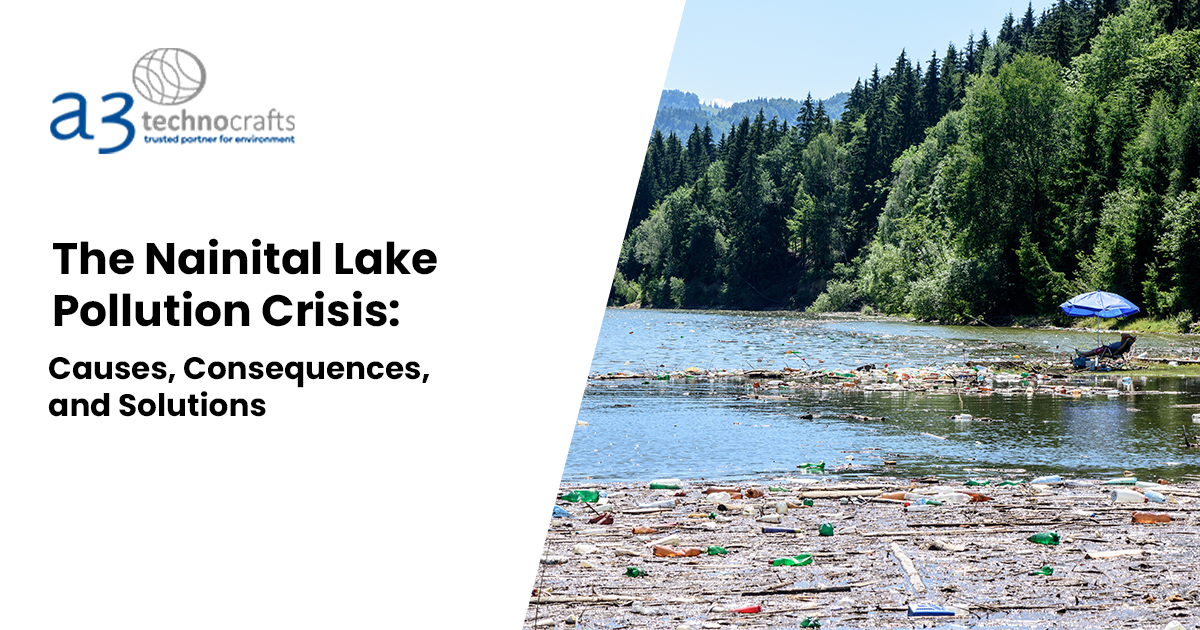What Happened at Nainital Lake
Nainital Lake, once a pristine water body, is now grappling with severe pollution, prompting urgent attention. The National Green Tribunal (NGT) intervened after a petition from environmental activist Hemant Singh Goniya, highlighting the alarming pollution levels in the lake. Untreated sewage and garbage have been flowing into the lake through over 40 British-era drains, exacerbating the water contamination. This pollution has escalated due to the lack of an effective Wastewater Treatment System to manage the increasing waste, which is rapidly deteriorating the water quality.
Why This Happened
The Nainital Lake crisis is a direct result of inadequate wastewater treatment systems. The outdated drainage infrastructure, designed during the British era, is unable to handle the growing demands of the urbanizing area. Untreated sewage and industrial effluents continue to pollute the lake, as the lack of an efficient wastewater treatment system leaves no effective solution to this problem. The environmental impact is dire, with waterborne diseases becoming more prevalent, especially during the monsoon season.
The Impact on Nainital Lake
The consequences of this pollution are severe. Nainital Lake, once a tourist attraction and vital ecological asset, is now a breeding ground for waterborne diseases. The rising contamination has impacted both public health and local biodiversity, and continued degradation could threaten the livelihood of the communities dependent on the lake. The lake’s deteriorating condition is also detrimental to the region’s tourism industry.
The Need for Immediate Action
The situation calls for swift action to restore the health of Nainital Lake. A sustainable and efficient wastewater treatment system is essential to prevent further damage. While cleaning efforts are ongoing, the core issue remains the untreated sewage and industrial effluent flowing into the lake. The long-term solution lies in establishing a robust wastewater treatment system that can address these concerns and prevent further contamination.
Solutions to Address the Nainital Lake Pollution
Effective wastewater treatment systems are the key to resolving the pollution crisis. Key solutions include:
- Sewage Treatment Plants (STPs) to treat domestic wastewater and stop untreated sewage from reaching the lake.
- Effluent Treatment Plants (ETPs) to manage industrial effluents and ensure that harmful chemicals are properly treated before disposal.
- Zero Liquid Discharge (ZLD) Systems to help industries recycle and reuse water, ensuring no liquid waste is discharged into the environment.
How A3 Technocrafts Can Help
A3 Technocrafts offers state-of-the-art wastewater treatment systems designed to tackle the pollution affecting Nainital Lake. Our wastewater treatment systems, including STPs, ETPs, and ZLDs, are specifically designed to treat and manage both domestic and industrial wastewater, removing harmful contaminants and protecting the lake’s ecosystem. By incorporating these systems, we can effectively reduce the pollution levels in the lake and work toward its restoration.
A3 Technocrafts’ commitment to offering advanced Wastewater Treatment System ensures that local municipalities and industries have access to sustainable solutions. Our tailored systems ensure that wastewater is treated efficiently, thus contributing to a cleaner and healthier environment for Nainital.
Conclusion:
A Path Toward a Cleaner Nainital LakeThe pollution crisis in Nainital Lake highlights the urgent need for a comprehensive wastewater treatment system. Without an efficient and sustainable approach to managing wastewater, the lake’s ecosystem will continue to suffer. A3 Technocrafts is ready to help by providing advanced wastewater treatment solutions that can help restore the lake’s water quality and prevent future contamination. With the right solutions in place, Nainital Lake can be revived, ensuring it remains a vital resource for the community and future generations.
